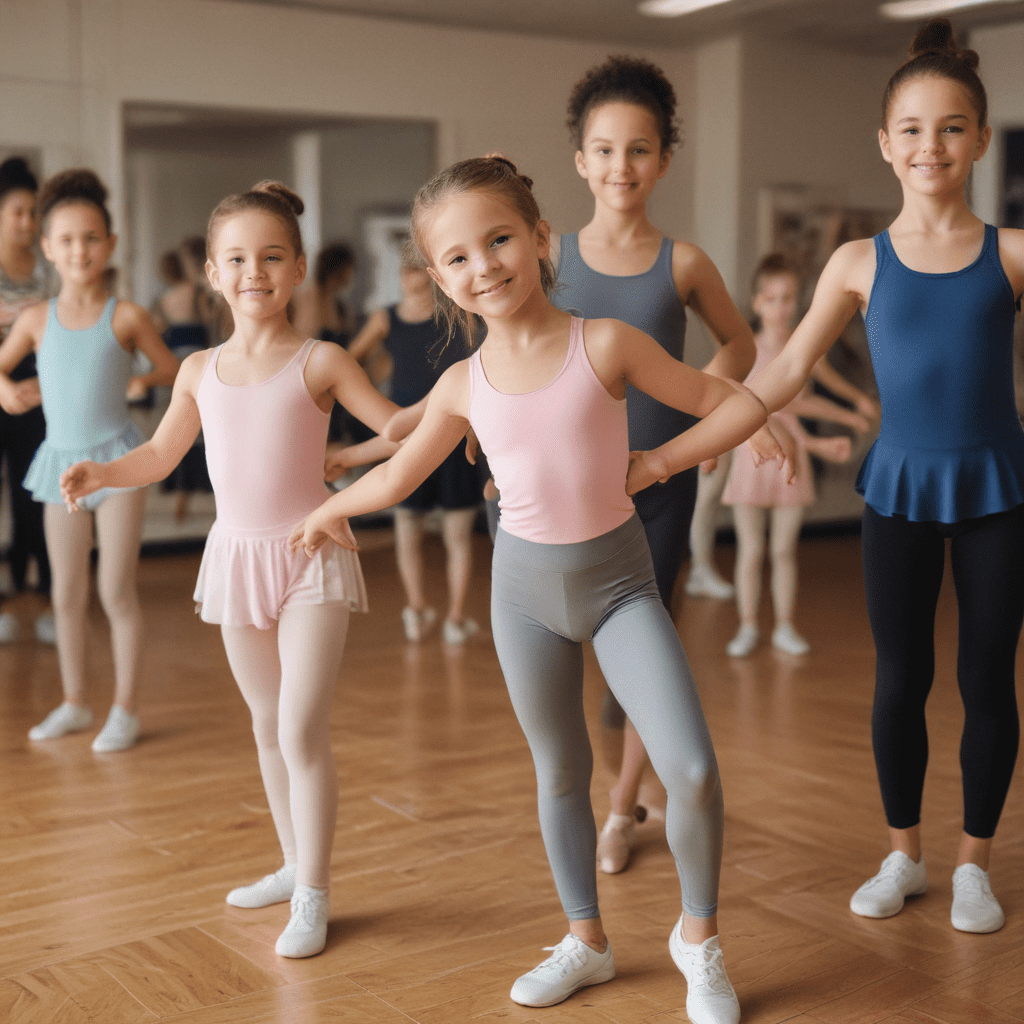
1. Introduction: The Importance of Dance for Kids
Dance offers numerous benefits for kids, both physical and mental. It enhances coordination, flexibility, and strength, promoting overall physical development. Dance also fosters creativity, self-expression, and musicality, nurturing cognitive and emotional growth. Additionally, it instills discipline, teamwork, and social skills, contributing to a child's well-rounded development.
2. Understanding Different Dance Styles for Kids
Choosing the right dance style for your child is crucial. Consider their personality, interests, and abilities. Ballet emphasizes grace, poise, and technical precision. Jazz combines athleticism with musicality, featuring energetic and syncopated movements. Contemporary dance is a versatile style that blends elements of ballet, jazz, and modern dance, promoting fluidity and artistic expression. Hip-hop is a street dance style characterized by rhythm, coordination, and funky beats. Each style offers unique benefits, so choosing one that aligns with your child's interests and aspirations is essential.
3. Assessing the Child’s Interests and Abilities
Observe your child's natural movements and preferences. Do they exhibit a rhythmic sense? Are they drawn to certain dance styles or music? Consider their physical coordination, flexibility, and endurance. Consult with dance teachers or attend trial classes to assess their abilities and potential. Understanding your child's interests and strengths will help you make an informed decision about the most suitable dance style and class.
4. Determining Class Size and Age Groups
Class size and age group play a significant role in the learning experience. Small class sizes allow for personalized attention and individualized instruction. Larger classes foster a sense of community and group dynamics. Choose a class size that aligns with your child's comfort level and learning style. Consider age groups as well. Younger children may benefit from smaller classes with shorter sessions, while older kids may thrive in more structured and challenging environments.
5. Location, Schedule, and Pricing Considerations
Practical factors such as location, schedule, and pricing should be taken into account. Choose a dance studio that is conveniently located and offers class times that fit your child's schedule. Inquire about class fees, registration fees, and any additional costs associated with dance attire or equipment. Consider your budget and ensure the cost of dance classes is sustainable over the long term.
6. Qualifications and Experience of Dance Teachers
The qualifications and experience of dance teachers play a crucial role in your child's learning journey. Look for teachers with certified training in the specific dance style your child is interested in. Inquire about their teaching philosophy and experience working with children. Certified teachers have undergone rigorous training, ensuring they possess the knowledge and skills to effectively instruct and inspire students.
7. Studio Facilities and Amenities
The studio facilities and amenities contribute to the overall dance experience. Ensure the studio has ample space for movement, is well-ventilated, and has a clean and inviting atmosphere. Check for appropriate flooring, mirrors, and sound systems. Inquire about amenities such as changing rooms, restrooms, and waiting areas. A comfortable and well-equipped studio enhances the learning environment and promotes a positive dance experience.
8. Trial Classes or Observation Sessions
Trial classes or observation sessions provide an invaluable opportunity to assess the dance studio and class dynamics firsthand. Observe the teacher's teaching style, the students' engagement, and the overall atmosphere. Trial classes allow your child to experience the class firsthand, giving them a chance to interact with the teacher and other students. Utilize these sessions to gather information and make an informed decision.
9. Communication, Class Culture, and Safety
Open communication between parents and dance teachers is essential. Inquire about the studio's policies regarding attendance, make-up classes, and communication channels. Observe the class culture during trial sessions or observation classes. A positive and supportive environment fosters a love for dance and encourages growth. Prioritize studios that emphasize safety, have clear safety protocols, and prioritize student well-being.
10. Making an Informed Decision
Choosing the right dance classes for kids requires careful consideration of various factors. Assess your child's interests, abilities, and learning style. Consider the dance style, class size, age group, and practical aspects such as location, schedule, and pricing. Explore the qualifications and experience of dance teachers, studio facilities, and class culture. Utilize trial classes or observation sessions to gain firsthand insights. By evaluating these aspects, you can make an informed decision that aligns with your child's needs and aspirations, fostering their love for dance and promoting their physical, mental, and emotional well-being.
FAQ
Q: How do I know if my child is ready for dance classes?
A: Observe their natural movements and interests. Consider their coordination, flexibility, and musicality. Consult with dance teachers or attend trial classes to assess their abilities.
Q: What are the benefits of dance for kids?
A: Dance enhances physical development, fosters creativity, promotes self-expression, instills discipline, and develops social skills.
Q: How do I choose the right dance style for my child?
A: Consider their personality, interests, and abilities. Explore different dance styles such as ballet, jazz, contemporary, and hip-hop, and choose one that aligns with their preferences and aspirations.
Q: What should I look for in a dance studio?
A: Ensure the studio has certified teachers, ample space, appropriate facilities, a positive class culture, and prioritizes safety. Open communication and clear policies are also important factors to consider.


